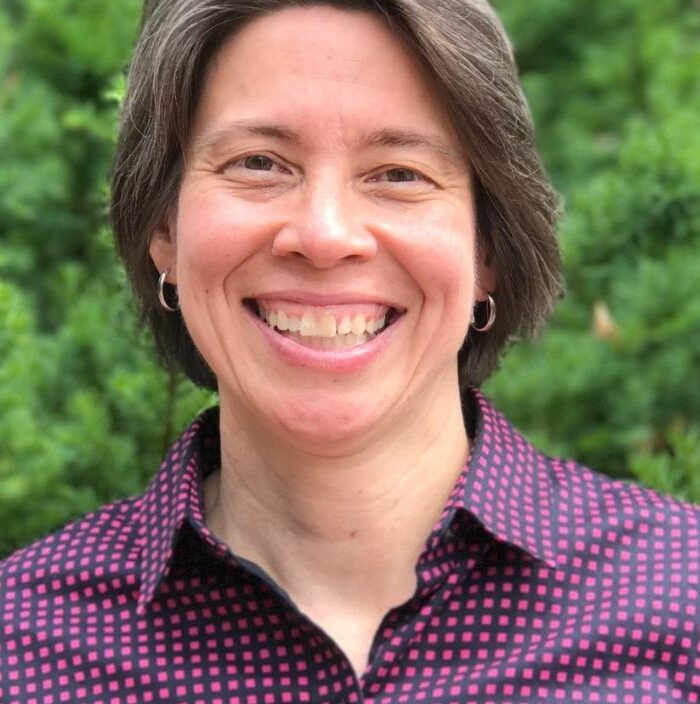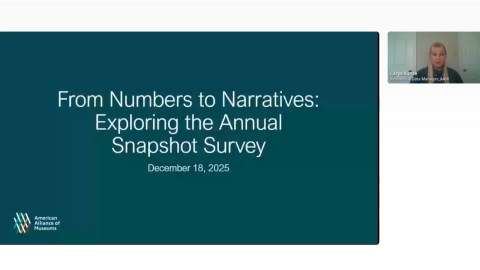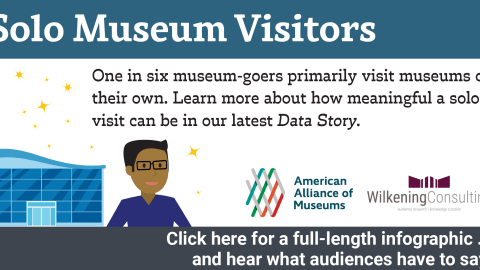
A few years ago, AAM began a journey to re-evaluate our recruitment process and do more to encourage a diverse applicant pool for our job openings. As a result, we overhauled our expectations around job qualifications, working to ensure they were true criteria for success in a position, not biases or assumptions.
The changes resulted in a much more thoughtful hiring process. Implementing “blind hiring” practices and creating opportunities for candidates to demonstrate skills—rather than over-relying on credentials—has increased staff awareness of how our biases influence which candidates advance from the resume review stage to the interview. We continue to receive favorable comments from job applicants about their recruitment experience, with some saying they have felt “seen” for the first time in a hiring process. Our efforts even attracted interest from the Society for Human Resource Management and the Association for Talent Development, who featured AAM in articles about blind hiring and inclusive hiring.
But while these changes have resulted in some progress, with 30 percent of our current thirty-six-person staff identifying as BIPOC, we know we can do more to improve these numbers and maintain better representation over time. Like all organizations who hope to create a more equitable workplace, we must continue to question all aspects of our processes, procedures, norms, and values—including with staffing decisions.
Adopting an Equity-Based Mindset
As we continue to strive for progress, the next question we are asking ourselves is how we can adopt an equity-based mindset in recruiting, one that recognizes the merit of candidates who do not fit our typical narratives of successful or qualified applicants.
To imagine the impact such a mindset could have, think about the actual hiring decision. When it comes down to two candidates who are equally qualified, but in different ways, how do we select a finalist? Too often, I suspect, we go with the candidate who we consider a “proven performer” or “known quantity,” because they have done a very similar job in the past and we believe they will need less support acclimating to our current operations. We may be less willing to select the candidate with a shorter work history or less experience doing the same job—even when they offer innovative ideas and fresh perspectives that may move our work in an exciting new direction. What opportunities are we missing out on by doing business as usual, selecting candidates in the same ways that we believe have served us well in the past? Who are we leaving behind?
Consider these common pieces of feedback about candidates from interviewers:
- They would be the “right fit” or would “fit in our workplace culture.”
- They were more “polished” than others.
- They had more “professional presence” than others.
- They had more of a “business mindset” or were more “corporate” than others.
- They can “hit the ground running.”
These phrases may seem innocuous, or even like legitimate selection criteria, but unless we really understand what we mean when we use them, we may be perpetuating a recruitment mindset that favors candidates reflective of a white dominant culture, as Tema Okun has written.
To avoid the trap of relying on past methods and seemingly “lower-risk” ways of selecting candidates, we can ask for more clarification when we hear these phrases about a candidate. Here are some prompts that we might ask to ensure we are considering equity in our recruiting decisions:
- What assumptions are we making about this applicant?
- What will we “miss out” on by not hiring this applicant?
- Are we placing too much emphasis on the technical skills of the job?
- Are we open to hiring a candidate who can offer complementary skills?
- Are we open to hiring a candidate who can help shape our workplace culture, or do we just want a candidate who can fit into our existing culture?
- What are our perceived risks of hiring this applicant, and do they have merit?
- Will we be truly living into our values around DEAI and racial equity by hiring this applicant? If so, how? If not, why not?
Challenging ourselves to adopt an equity-based mindset will take practice and deliberate action. It will require us to question our own thinking openly and actively. Here are some actions that I think we must be willing to take to cultivate a more equitable recruitment process:
- Stop seeking “perfection” and recognize that all candidates will have both strengths and areas for improvement.
- Allow time to identify the true evaluation criteria for candidates before the actual recruiting begins, then ensure that all those involved in the hiring decision understand those requirements.
- Recognize that candidates may be qualified in different ways for a position. For example, some may have transferable skills or come from different industries.
- Recognize that all new hires will need support and training, even if they have performed similar job duties in other organizations.
- Stop taking the easy way out by choosing candidates who we believe will need the least amount of training, whether because they have done the exact same job before or know the same people in our own networks.
- Acknowledge that we as supervisors need to spend time coaching, training, and introducing our new hires to our organization, industry, networks, colleagues, and so on.
- Choose to hire a candidate who is qualified in ways that are less familiar to us.
- Stop overvaluing technical skills at the expense of people skills. Recognize that soft skills such as managing people, negotiating, coaching, facilitating, mentoring, and communicating are as important as the technical skills and know-how of a position.
Avoiding the Urgency Trap
Finally, we must also consider how the pressures of “timeliness” and “urgency” influence our hiring decisions. When there is a vacancy in a department, the other staff members may need to pick up extra work or delay responding to inquiries or meeting project deadlines. The organization may need to dedicate extra time to training them to perform tasks outside of their usual scope of responsibility. In this situation, defaulting to hiring in the usual ways and selecting candidates who we believe will need little training is a tempting way to quickly return to business as usual. But when expediency becomes the focus of hiring, we miss out on the opportunities that a staffing transition can bring, such as:
- Cross-training, stretch assignments, and professional development/growth.
- Time to pause, re-evaluate, and determine what is or is not working within the department’s functions.
- Time to identify priorities and reassess the impact of our work and where we are spending our time.
Reframing staff transitions and the challenges associated with them can help organizations promote decision-making with long-term benefits rather than short-term fixes. For example, envisioning staff transitions as professional development opportunities can provide a path for additional recognition or promotion, as staff learn new skills and take on new assignments.
Dedicating funds for occasional temporary help during transitions can also be an investment in current staff. Organizations can go a step further and reframe “temporary help” as “temporary learning assistance.” Money budgeted for temporary employees serves two purposes—providing additional staff capacity to provide continuity of work and investing in permanent staff’s professional development by allowing them time and space to learn new skills.
Cultivating a workplace culture that recognizes the realities of staff transitions can help prevent overwork or burnout of existing staff. Encouraging managers to scale back projects and deadlines and to reconsider work priorities (urgent vs. necessary, for example) during staff transitions can provide relief to existing staff and give hiring managers time and space to fully consider equity in hiring decisions.
A more equitable hiring process will take commitment from individuals at all levels in the organization. We must each be willing to disrupt our own usual way of thinking and behaviors when making a selection and re-envision how we manage the realities, challenges, and opportunities that staff transitions present.
When making hiring decisions, what prompts have you used to disrupt your typical way of thinking? What other actions do you think organizations should take to cultivate a more equitable recruitment process? Share your answers in the comments below!









This article hit me incredibly hard. I graduated from The University of Oklahoma with a Master of Arts in Museum Studies in May, 2020. In spite of the pandemic, there were… what I thought at the time “thankfully”… jobs to be had. I sent hundreds of resumes and job applications, though I never really heard from any… netting precisely two interviews for my efforts (one as a security officer at the university museum). So many included, for entry-level positions, 2-4 years experience in the field. Having just completed a 2-year degree in the field with stellar grades and a GA-ship doing exhibits for the main university library… I thought that was good enough. I was dead wrong. After months of struggling to even get a return phone call and being passed over by the university I received my Masters from nearly a dozen times, I started a consultancy out of sheer desperation to find ANY paying work in a field I was academically qualified for and passionately love. Nothing. The walls to enter the field in the States as are ridiculous, much less as a POC. I’ve now set my sights on a PhD in Cultural Heritage & Museum Studies in the EU in hopes of being able to teach… sacrificing three to five years away from my kids just to find work. I love museums and the field… I just feel that there is not the diversity here (in the US) that is needed for a true diverse employment base.
Same situation. Graduated in December 2019 with MA in Arts Administration from Baruch. My second master’s degree. I had a career transition from pharma & IT to the arts & cultural industry. Despite the overall extensive background and 10+ years of professional experience, having two internships in the arts organizations and writing consultancy on museum audience engagement, my applications were unsuccessful. The cold contact general application process seems a formality. You need to know someone to get that foot in the door. Networking and connection building is vital. At least, that was proven by my situation. But also, there are not a lot of professional organizations out there. So finding connections and building relationships is a crucial skill that needs to build and exercised daily. Not every school provides opportunities for that. I landed my art job in March 2021. So more than a year, I was hanging out there — not everyone can rely on their partners to provide for the family, and the list needs to compromise to survive. Brutal!
Jeremy Davis, I feel your pain. Though I am not a POC, I still have struggled with obtaining employment in this field. I graduated from the University of West Georgia in December 2020 with a masters degree in history and a museum studies certificate. I have been applying to jobs since my graduation day – I have amassed only 10 interviews out of 100+ resumes sent. All rejected and, like you, even by my own alma mater.
It’s frustrating to see that entry level jobs want young people with seemingly more years of experience than the time they’re on earth. (I’m 46, and I guess that poses a problem for some institutions.) I think ageism comes in to play, but cannot say definitively.
You and I have skills, abilities, fortitude, and most importantly, the will to give our all for our chosen field and our passion. Someone will give us a chance. I wish you the best of luck, my friend.
Thank you for sharing this. As someone coming from an extensive science museum background and someone who currently works in equity and organizational culture, I found this to be very helpful. I am glad that info like this is available to museums as they can hold much implicit bias around who does and does not belong in the museum space. This article was helpful for me to think about what an equitable selection process could look like for internal committees (or external for that matter).